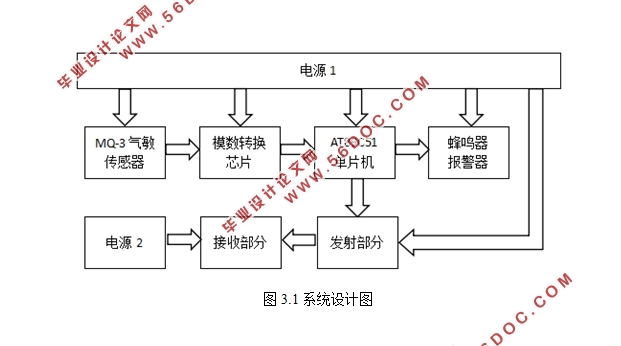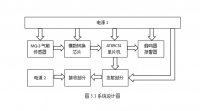基于单片机酒精检测的智能车钥匙设计
来源:56doc.com 资料编号:5D21643 资料等级:★★★★★ %E8%B5%84%E6%96%99%E7%BC%96%E5%8F%B7%EF%BC%9A5D21643
资料以网页介绍的为准,下载后不会有水印.资料仅供学习参考之用. 密 保 惠 帮助
资料介绍
基于单片机酒精检测的智能车钥匙设计(论文11600字,外文翻译)
摘要:为了从源头上减少酒驾,本文设计了一款基于单片机酒精检测的智能车钥匙。该设计以MQ-3气敏传感器和AT89C51单片机为核心,结合无线射频识别(RFID)技术,能准确对司机在开车前是否饮酒做出判断并控制车辆能否启动。该设计能实现检测呼气中酒精浓度、警示、控制车辆启动等多种功能,能够有效地从源头遏制酒驾行为,且具有携带方便,使用便捷等特点。
关键词:MQ-3气敏传感器;AT89C51单片机;RFID技术
Design of Smart Car Key with Single Chip based Alcohol Detection
Abstract:To reduce the amount of drunk driving, this paper designs a smart car key with single chip based alcohol detection. This design uses the MQ-3 gas sensor and the AT89C51 single chip as the key, and combines the radio frequency identification (RFID) technique, which can accurately determine whether the driver is drunk before driving and control whether the vehicle can be started. This design can realize the alcohol concentration detection of breath, warning, vehicle control and so on. It can effectively curb the behavior of drunk driving, and is convenient to carry and easy to use.
Keywords: MQ-3 gas sensor; AT89C51 single chip; RFID

目录
1 绪论……………………………………………………………………1
2 研究现状………………………………………………………………1
3 系统总体设计方案……………………………………………………2
4 系统硬件设计…………………………………………………………3
4.1 MQ-3气敏传感器……………………………………………………………………………3
4.2 模数转换芯片……………………………………………………………………………4
4.2.1 模数转换芯片的选择……………………………………………………………4
4.2.2 模数转换电路设计………………………………………………………………5
4.3 AT89C51单片机……………………………………………………………………………7
4.3.1 AT89C51单片机简介………………………………………………………………7
4.3.2 时钟电路…………………………………………………………………………8
4.3.3 复位电路…………………………………………………………………………8
4.3.4 四分频电路………………………………………………………………………9
4.3.5 AT89C51单片机工作过程………………………………………………………9
4.4 RFID模块…………………………………………………………………………………10
4.4.1 RFID模块简介……………………………………………………………………10
4.4.2 RFID模块设计……………………………………………………………………11
4.5 报警电路…………………………………………………………………………………13
5 系统软件设计…………………………………………………………14
5.1 系统总体流程……………………………………………………………………………14
5.2 模数转换流程……………………………………………………………………………14
5.3 RFID模块子程序流程……………………………………………………………………15
5.4 报警子程序流程…………………………………………………………………………16
6 系统测试………………………………………………………………17
7 结束语…………………………………………………………………17
参考文献…………………………………………………………………19
致谢………………………………………………………………………20
|



